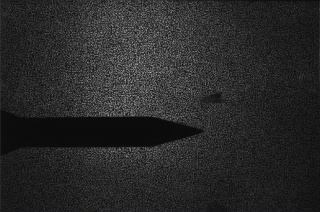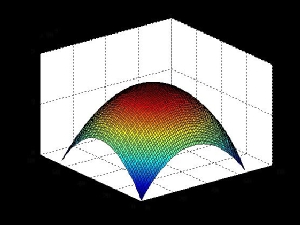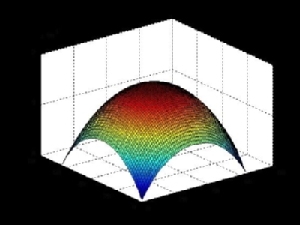Wavefront sensing with a background oriented Schlieren imaging system
- Student: Abhishek Bichal
- Funding Agency: Partial support provided by Air Force Office of Scientific Research
This project investigated the application of Background Oriented Schlieren (BOS) for wavefront sensing. Other sensors typically used for wavefront measurements include the Shack-Hartmann wavefront sensor and the Malley probe. Both are highly sensitive to wavefront distortions; however, they can be limited by their relative complexity and expense and are generally restricted to small beam apertures. In contrast, a BOS experiment is relatively easy and inexpensive as it simply requires a random background, a camera and a bright enough light source to illuminate the background for the desired exposure time. BOS is based on the principle of light ray deflection due to gradients in the index-of-refraction field. The deflection of the light rays is equivalent to the concept of a distorted wavefront such that a measurement of the local deflection is equivalent to the measurement of the local wavefront distortion. This work investigated this concept in-depth and considered practical aspects of such a measurement system by performing wavefront measurements on a known object, a plano-convex lens. The main conclusion of the study is that BOS can indeed be used for accurate wavefront measurements and presents an economic alternative to other types of measurements.
The image below shows a random background placed behind a Mach 2.0 flow over a cone model. By determining the displacement of the random background image relative to a no-flow reference image, the deflection of light rays passing through the flow can be measured. This is shown on the right hand image where the presence of the shock wave and subsequent expansion are clear. Evidence of the boundary layer formed on the side of the model and additional shock waves formed by fins on the aft portion of the model are also clear.
 |
 |
Raw image of a random background and the measured deflection for a cone model placed in a Mach 2.0 wind tunnel.
 |
 |
Comparison of the expected and measured wavefront of a plano-convex lens using a BOS wavefront sensor
For more information:
- Bichal, A., and Thurow, B. S., “Development of a Background Oriented Schlieren Based Wavefront Sensor for Aero-Optics”, AIAA Paper 2010-4842, 40th AIAA Fluid Dynamics Conference, Chicago, June 2010.



